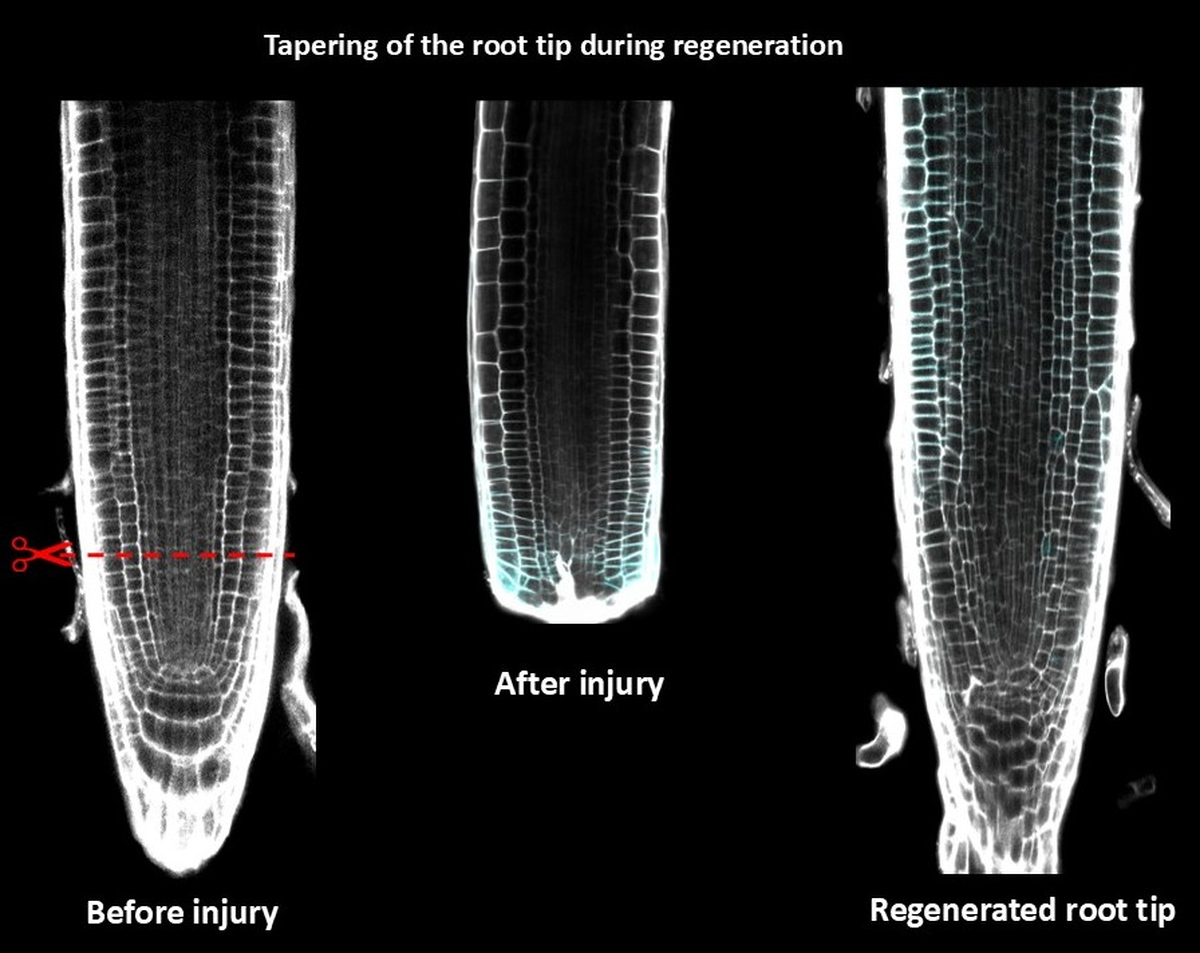When humans suffer injuries like cuts or nail damage, the healing process can be slow and may leave scars, because the damaged tissues often lack the ability to fully regenerate. This is largely due to the fact that many human organs are made of fully specialized cells that do not readily divide or reprogram themselves. Plants, however, demonstrate a strikingly different capacity: they can heal wounds rapidly and efficiently by reorganizing and reprogramming their cells to regenerate lost tissue.
Recent cutting-edge research published in Developmental Cell (June 3, 2024) by a collaborative team from ONY Biotech and the Centre for Cellular and Molecular Biology (CCMB) in Hyderabad has shed light on the cellular and molecular processes that enable plants to regenerate damaged tissues. The study focused on the root tip of Arabidopsis thaliana, a widely used model plant, which contains a specialized group of cells including stem cells critical for root growth.
When the root tip is removed, this organized cellular structure is initially lost. Yet, within hours, the cells near the injury site begin to change their identity, regaining the characteristics of the lost root tip. Using advanced imaging and molecular biology techniques, the researchers observed that within 12 to 20 hours, the damaged cells dedifferentiated — meaning they reverted to a more flexible, stem-like state — enabling them to regenerate a fully functional root tip in just a few days.
One of the key players identified in this regenerative process is the plant hormone auxin, long known for its role in growth and development. The study revealed that auxin acts as a central signal, activating a set of genes at the wound site that initiate regeneration. In addition, a group of transcription factors — proteins that control which genes are turned on or off — were found to coordinate the reprogramming of cells, orchestrating the reshaping and rebuilding of the root tip.
This discovery not only deepens our understanding of plant biology but also holds promising implications for agriculture and biotechnology. By harnessing the mechanisms that plants use to heal themselves, scientists hope to develop crop varieties that are more resilient to damage from pests, environmental stresses, and mechanical injury.
Beyond agriculture, the insights gleaned from plant regeneration might also inform regenerative medicine research in humans. While human tissue regeneration is more limited, studying the parallels in plant systems could inspire new approaches for enhancing healing in organs such as the liver and skin, which possess some regenerative abilities.
Dr. Rakesh K Mishra is Director of the Tata Institute for Genetics and Society (TIGS) and former Director of CSIR – CCMB, Hyderabad.
References:
Takeo, M., Chou, W.C., Sun, Q., Lee, W., Rabbani, P., Loomis, C., Taketo, M.M. and Ito, M., 2013. Wnt activation in nail epithelium couples nail growth to digit regeneration. Nature, 499(7457), pp.228-232.


%20(2).png)

0 Comments